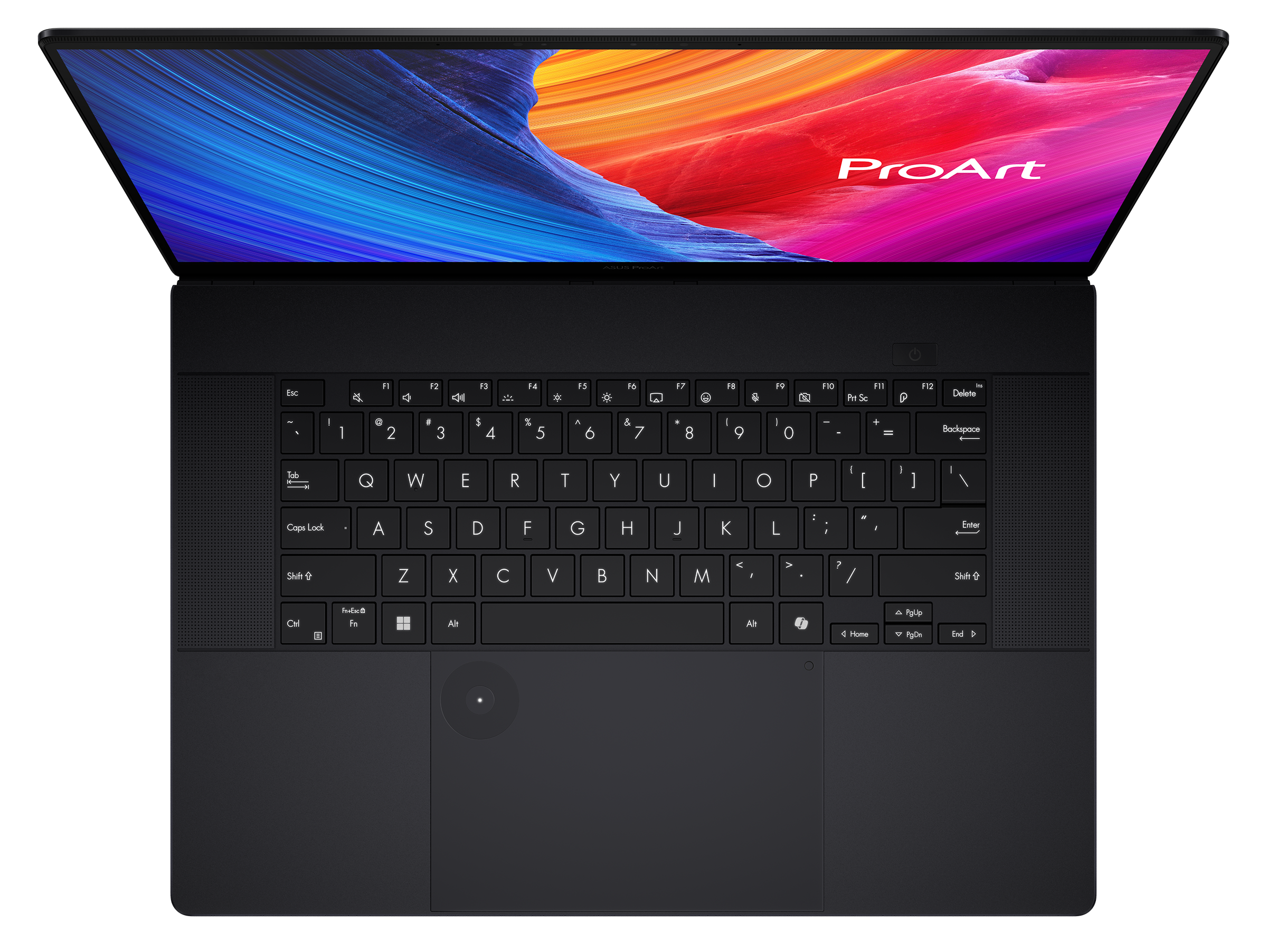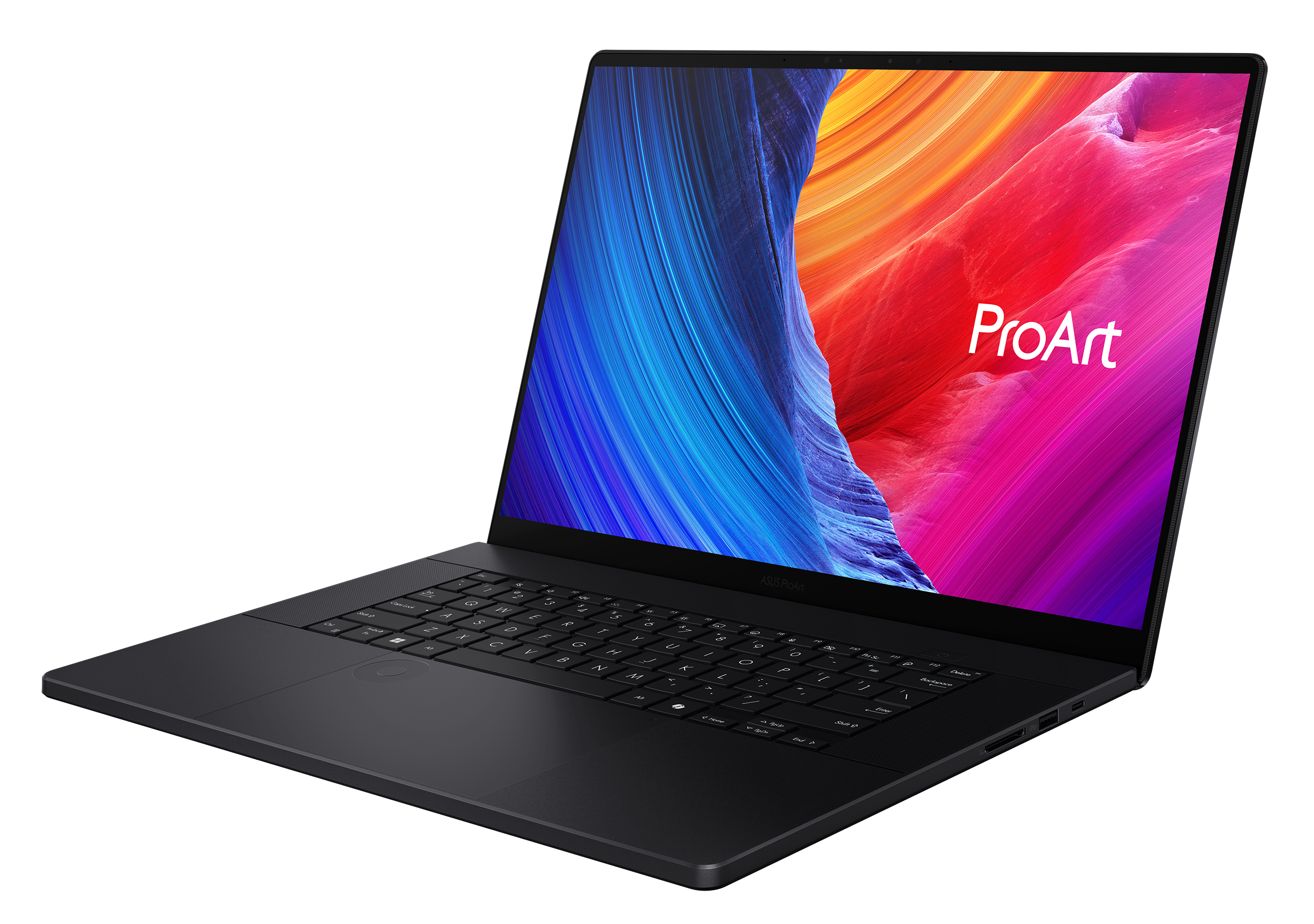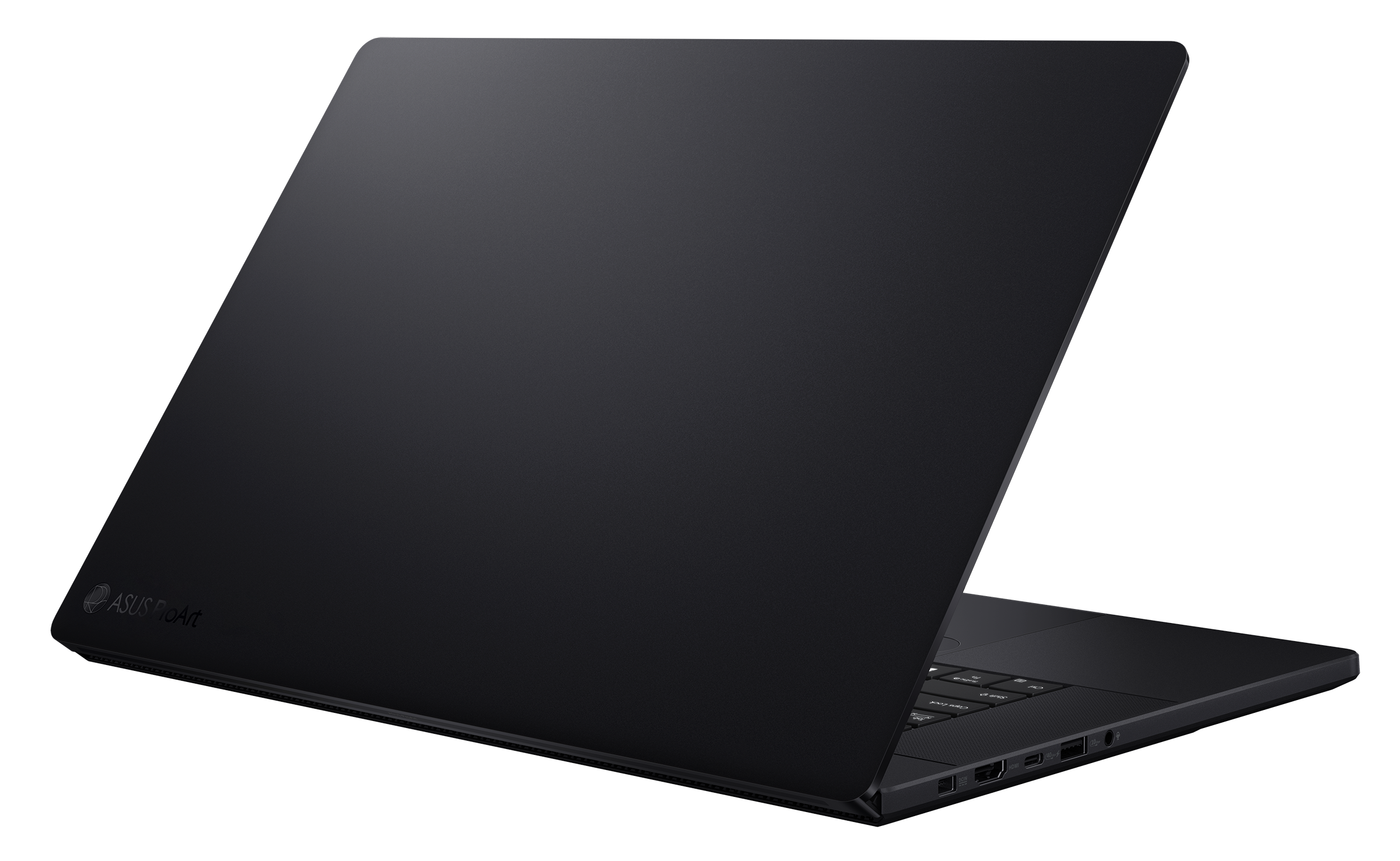ASUS ProArt P16 (H7606) is an excellent laptop for creative and technical professions, for example for designers, engineers or creators of multimedia content. The performance of the processor and dedicated graphics will, of course, also please gamers.
It is the first laptop I have tested that not only has a modern processor of the latest generation with NPU, but also NVIDIA GeForce RTX 4070 graphics, i.e. full equipment for work, games and also for applications using AI and machine learning. The notebook has a premium design, a solid aluminum body with a surface treatment based on active silane resin with modified fluorine. This makes the surface hydrophobic and does not capture fingerprints or smudges, so the surface always looks clean. The design meets the demanding requirements of the US military standard MIL-STD-810H.

The 16-inch OLED Lumina touch screen has a 4K resolution, VESA DisplayHDR True Black 500 certification. The manufacturer claims 100% coverage of the DCI-P3 color gamut. The maximum brightness is 500 nits and the deep black has a brightness of 0.0005 nits, which in practice means a very high contrast. The value of the delta parameter E<1 is a guarantee of accurate colors. The display is protected by durable Corning Gorilla Glass NBT with a transparency of up to 92%, which also contributes to a brilliant image.
The electronic heart of the device is the new AMD Ryzen AI 9 HX 370 processor with 12 cores and 24 threads, which can work at up to 5.1 GHz in turbo mode. Of course, the actual performance depends on the cooling efficiency. The notebook’s cooling system can dissipate up to 75 W of CPU TDP in manual mode and 70 W in Performance mode. GPU consumption must also be added to this, which is why a 200 W power supply with a proprietary connector is included with the notebook. If necessary, you can also power and charge the laptop via USB-C, of course, with an adequately lower power. Compared to the AMD Ryzen 8040, the new processor brings a 14% increase in single-core performance and up to 19% when using multiple cores. Due to the modern processor, the notebook has a very good battery life for applications with standard demands on computing power. With sufficient brightness for working in a room during the day, the battery lasts 8-10 hours of working with documents.
ASUS ProArt P16 (H7606) has a very efficient cooling, which involves double fan blades, the shape of the exhaust holes that prevent the flow of air to the display, and mainly heat pipes with high-end technology based on liquid metals Thermal Grizzly. Tri-Fan technology directs air flow through precisely calculated vents and effectively cools internal components. The third auxiliary fan is switched on during computationally or graphically demanding operations. You can set Standard, Performance and Manual profiles according to your current usage. In Manual mode, a maximum CPU + GPU TDP of 120 W can be used. At low load, the cooling is practically noiseless.

A 50 TOPS NPU is available for machine learning tasks. I tested a configuration with 64 GB DDR5 clocked at 7500 MHz, which in practice means enough memory for any purpose. At the time of testing, there were no libraries or environments available to allow running local models on the NPU, but I imagine that when the developers add support for this, the higher RAM capacity will be an advantage, since it is important to have the entire model in memory when running local AI models , because when generating outputs, it is not possible to predict which neural “tracks” the generation of the response will follow.
Graphics and some AI-related calculations are handled by the NVIDIA GeForce RTX 4070 Laptop GPU with 8 GB GDDR6 VRAM, third-generation RT cores and fourth-generation Tensor cores. GPU performance for AI calculations is 321 TOPS. RT and Tensor cores enable real-time ray tracing, realistic lighting, shadows and effects, as well as 3rd generation NVIDIA DLSS (Deep Learning Super Sampling) and high performance for training neural network models. In the benchmark application 3D Mark Time Spy, I achieved an average score of 12,021 points from three consecutive measurements. During testing, I mostly used DaVinci Resolve for video editing, while the creative process of 4K video was surprisingly smooth for a thin laptop and the rendering was pleasantly fast. I also used a laptop with NVIDIA graphics to train neural networks for the Machine Learning series, and despite the GPU only having 8GB of VRAM available, training was fast and efficient. In other words, it’s an excellent laptop for developers in general and AI developers in particular.
When deciding between using the space for the numeric keypad and the speakers, the designers preferred the speakers directed upwards towards the listener. The keyboard has standard key dimensions with a pleasant and ergonomic stroke of 1.7 mm. Only four cursor keys are half-height, but let’s face it: Who uses them intensively? Players also use the WASD keys to control the movement of objects in games. Like all new Windows laptops, the ASUS ProArt P16 (H7606) has a key to activate Copilot. For now, it activates Copilot’s web interface, but that may change in the near future, depending on Microsoft. The large touchpad with a pleasant surface also deserves praise. In the upper left part, it has a visually and tactilely distinguishable DialPad control element. It is activated by a gesture – by dragging your finger inward from the upper right corner of the touchpad. In the center of the DialPad is a small white LED indicating that it is active. At the same time, a menu of functions will appear on the display, also in the form of a circle around which options for switching are displayed, or a graphic scale with the current value of the set parameter. By default, you can adjust the display brightness and volume in this way. You determine the value of a parameter by circularly moving your finger inside a larger dashed circle, similar to how the popular iPod player was once controlled. DialHub is configured in the ProArt Creator Hub application. You can also set various parameters in applications, but they must support this control method. DialPad support is implemented, for example, in creative applications from Adobe, such as Premiere, After Effects, Photoshop and Lightroom. I tried it to adjust brightness, contrast and saturation values in Lightroom Classic and I have to say that it is very addictive. I also see great potential for such a control method in working on the timeline in video editing applications and also in compatibility with the Microsoft Wheel.

The ASUS AiSense infrared camera can detect the user’s presence, so if you move away from the laptop, it will lock and dim the display. The connector equipment is also rich, including a full-size HDMI 2.1 port that supports 8K/60 Hz with DSC support, 4 USB Type-C ports that support up to 100 W Power Delivery for charging and up to 40 Gb/s bandwidth, and a card reader SD. The notebook supports the latest Wi-Fi 7 standard.
Not only the operating system, but also some interesting pre-installed applications are increasingly using AI. ProArt Creator Hub helps you set up your system, not only in terms of performance and cooling profiles, but also in calibrating the display and external monitors. StoryCube uses AI to sort, edit and manage photos and videos. It can automatically recognize and categorize similar files into folders based on their content, such as outdoor activities, pets, children, and more. Face recognition technology can automatically sort and group images of people. ASUS MuseTree, on the other hand, helps users with creative activities, including inspiration, sketches or planning, and mind maps.


Six speakers, two of which are treble and two for reproducing lower tones, provide excellent sound, especially if you activate Dolby Atmos. The sound system was tuned in cooperation with audio specialists Harman Kardon. The signal processor, which is part of the integrated amplifier, makes it possible to fully utilize the capabilities of the speakers and achieve a higher volume without distortion.
PROS, CONS:
+ Performance, 4K OLED display with true colors, large touchpad with DialPad and numeric keys, SD card slot
– Applications are not yet able to use the potential of the NPU
PARAMETERS:
Processor: twelve-core AMD Ryzen AI 9 HX 370, clock frequency 2.0 GHz – 5.1 GHz, NPU 81 TOPS (XDNA 50 TOPS); graphics NVIDIA GeForce RTX 4070 Laptop GPU, 8 GB GDDR6 VRAM; RAM: 64 GB, 7500 MHz, LPDDR5X; storage: 2 × 2 TB M.2 NVMe PCIe Gen4; display: touch OLED 16″, 4K (3840 × 2400 pixels), 16:10, 60 Hz, latency 0.2 ms, brightness 400 nits, peak 500 nits, 100% DCI-P3, DisplayHDR True Black 500 certification; ASUS AI Sense IR camera, Wi-Fi 7, operating system: 1x USB 3.0 Type-C, 1x USB 3.2 Type-C -C, display/power support, 1× USB 3.2 Gen. 1 Type-A, HDMI 2.1 TDMS, 3.5 mm audio jack, SD card reader, battery: 90 Wh, dimensions: 354.9 × 246.9 × 17 .3 mm, weight 1.85 kg.
Cena: 2739 EUR
Source: www.nextech.sk


